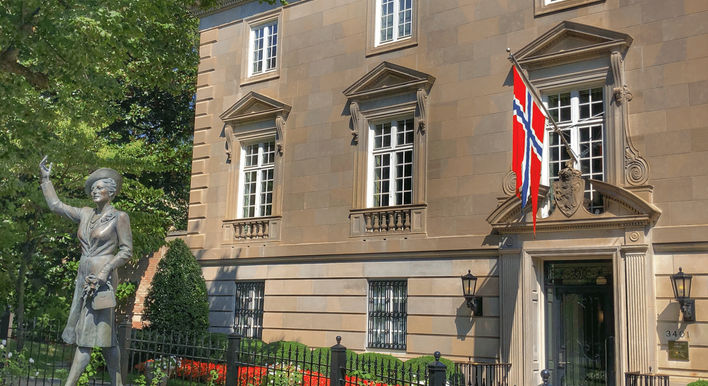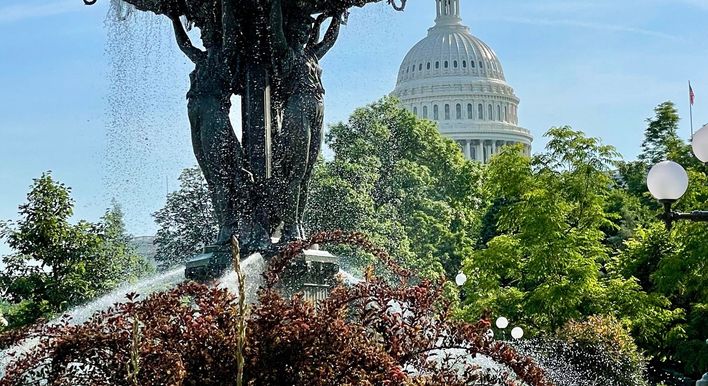When Pierre L’Enfant made his plan for the new capital city, he thought of everything, a canal, a house for the president, where Congress would meet, where the streets would be. Everything except where to put the dead. His plan didn’t include a cemetery!
A tour we think you'll love
In 1807 members of Christ Episcopal Church secured space for a burial ground. And since most members of Congress who died in office were buried there, it eventually became known as Congressional Cemetery.
Members were buried under a marker designed by Capital architect Benjamin Latrobe. This was later used as a cenotaph, a marker for an empty grave, memorializing Members who died in office but are buried elsewhere. This practice was abandoned when a Senator Hoar from Massachusetts said that the idea of being buried underneath one of these things “brought new terror to death.”
When I arrived in DC in the late 80s this place was really run down. The grass was high, stones toppled, vaults were broken into and used by drug dealers and prostitutes. The place receives no government funding and while Christ Church still owns the property, caring for it was beyond their means. The place really went to the dogs.
And thank goodness it did because dogs have rescued Congressional Cemetery. The cemetery charges neighbors $400 a year to walk their dogs here. It’s a win-win. The cemetery raises money and neighbors have a large fenced-in spot for dogs their dogs to roam. That’s not easy to find in a city.
And dogs love this place. Maybe it’s all the bones. The cemetery also receives help from other four-legged friends: Goats. Goats are brought in to control invasive plants in an environmentally friendly manner.
Some of those buried here include:
John Philip Sousa was a director of the Marine Corp band. Every year on his birthday the band makes the 30-minuet march from their barracks to pay tribute to the March King through his music and a wreath laying.
Mathew Brady the famed Civil War photographer.
Davey Harold, a man who kept bad company and was hanged for his role in the Lincoln assassination is here.
Civil rights leader and three term DC mayor Marion Barry. Barry was called mayor-for-life, even after he left that office. I think it’s probably time we stop judging Barry on anything less than his entire life and career.
William Thornton who designed the Capitol is under a tree.
This is the resting place of Mary Martha Corinne Morrison Boggs Roberts. Better known to NPR listeners as Cokie. She’s buried next to a cenotaph for her father Congressman Hale Boggs and the grave of her brother Tom, a DC lobbyist.
Vice president and signer of the Declaration of Independence Elbridge Gerry is buried here. Gerry is where we get the term Gerrymandering – the practice in which members of the House of Representatives set the boundaries of their Congressional districts – essentially allowing them to select the voters who will elect them.
J Edgar Hoover is here. A few feet away is his special friend Clyde Tolson.
There are about 68 thousand people buried here. And you could be too, there are plots available.
But if you want to see it while you’re upright, I’m happy to show you around. Go to offtherecordtours.com to contact me for a tour of Congressional Cemetery.






